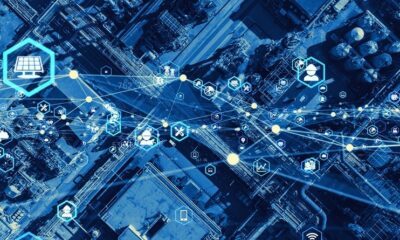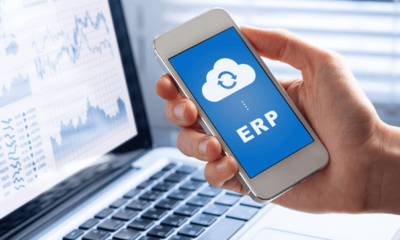
Nanogenerators have ushered in a new era in the advancement of Internet of Things (IoT) technologies. As IoT devices grow in number, the need for efficient, sustainable, and stable power sources also intensifies. Nanogenerators that can convert thermal or mechanical energy into electric power have emerged as a promising solution to this challenge.
What Are Nanogenerators and How Do They Work?
In fundamental terms, nanogenerators are infinitesimally small devices that can harvest energy from natural sources like noises and vibrations, sound waves, or even body movement. They function according to the principle of piezoelectricity, in which specific substances produce an electric charge in reaction to mechanical stress.
This energy-harvesting capacity makes nanogenerators ideal for powering small-scale Internet of Things (IoT) equipment, which are frequently deployed in inaccessible or far-flung places where traditional sources of energy are impracticable.
Researchers worldwide are working on new generations of nanogenerators purpose-built for the IoT era. A recent advancement in this space is nanogenerators based on a new piezoelectric material – a compound called edabco copper chloride.
General piezoelectric materials found in commercial devices have always had limited capacity to generate electricity until very recently. Additionally, they frequently use lead, which is harmful to both our natural world and human well-being. Further, they relied on non-renewable energy sources, which is not sustainable in the long term.
These nanogenerators of the future will have an all-new record for energy density that can be used to harvest tiny mechanical vibrations in various fluctuating and dynamic scenarios – like human movements or vehicular motion. Using nanogenerators, the vibrations of an aircraft might power its sensor systems, or a person’s heartbeat could fuel their battery-free pacemaker. The possibilities in the IoT world are immense.
Why Use Nanogenerator Technology? Key Benefits for IoT Implementations
Nanogenerators, despite being an emerging concept, hold great promise for IoT projects. Its main benefits include:
1. A tiny form factor
Nanogenerators usually cover 2.5 cm2 in area and have a thickness comparable to that of an executive’s business card. Therefore, it could be deployed in literally an infinite number of scenarios, embedded within small IoT devices, or grafted into equipment. Now we know what IoT is – a rapidly growing worldwide network of items equipped with software and sensor technology that can interact with other devices and exchange data. The small form factor of nanogenerators could be a major game-changer in this ever-expanding IoT implementation roadmap.
2. Reduction in battery-related overheads
Nanogenerators facilitate the development of self-powered Internet of Things devices. This cuts out the demand for batteries that are not just detrimental to the environment but also must be regularly replaced or recharged. With nanogenerators, Internet of Things devices can function continuously and autonomously, reducing repair expenses and downtime by a significant margin.
3. Increased shelf-life of IoT devices
Nanogenerators can improve the resilience and dependability of Internet of Things devices. As long as there is a supply of either mechanical or thermodynamic energy, nanogenerators can generate power in perpetuity – as opposed to batteries, which have a limited shelf life and may deteriorate over time. New generations of this technology are even more responsive to vibrations, reducing the reliance on fossil fuels.
This guarantees that Internet of Things devices can function efficiently for longer durations, thereby improving their functionality and longevity.
4. Applications in hard-to-reach areas
A challenge of IoT is that it cannot be deployed remotely and is limited by our physical reach and scope of operations. Nanogenerators could widen the reach and potential uses of Internet of Things technologies. For example, they can facilitate the creation of Internet of Things devices that are fueled by body movements. This could transform sectors like healthcare, where wearables can monitor vital indicators and offer real-time health statistics.
In the arena of environmental assessments, nanogenerator-powered IoT sensors can be placed in remote or hazardous areas to monitor the landscape and identify anomalies.
5. Energy extraction from low-frequency vibrations
In comparison to other energy harvesting technologies, nanogenerators have a much higher capacity for working at lower frequencies. The majority of our daily activities, like our walking cadence or typing speed, happen at low frequencies. Also, several natural phenomena, like ocean waves, occur in low-frequency conditions.
Where Would Nanogenerator-Based IoT Networks Get Their Energy?
As mentioned, nanogenerators can convert low-frequency vibrations into IoT-friendly energy reserves. This can happen via:
- Water: Water-based energy consists of rainfall, and river, or ocean swells, which are abundant in urban areas. This is an outstanding option for smart city development. Certain nanogenerators have a robust, easily-sealed exterior that can readily respond to water-wave stimulations emanating from any direction.
- Wind: Wind energy, a critical mechanical energy widely distributed across both oceans and landmasses, is generally regarded as a critical renewable resource for residential electricity generation and self-sufficient Internet of Things (IoT) systems. These energy harvesting units can be employed almost anywhere, including rooftops of commercial structures, city parks, and outdoor manufacturing facilities, whereas conventional wind power plants are only practical in remote areas.
By switching to these alternative sources, IoT projects can hugely reduce their carbon footprints and also save on long-term battery costs.
Examples of IoT Use Cases for Nanogenerators
As research advances in this field, a few standout use cases have emerged that merit the industry’s attention. This includes:
1. Self-powered keyboards that act as a security mechanism
Intelligent keyboards created with nanogenerators help users interact with devices in unique ways. Along with text-based passwords, they will also support handwriting dynamics as an aspect of biometric authentication. For example, a self-powered keyboard without mechanical striking might recognize people using it based on keystrokes. Because of the keyboard’s nanogenerator’s elevated sensitivity, aberrant or suspicious behavior will be easily detected.
2. Self-powered, real-time pollutant detection in vehicles
Nanogenerators offer excellent design flexibility and efficiency in hostile conditions. This can be employed in vehicle emission testing-filtering equipment. For example, let us consider a nanogenerator that powers a gas sensor when the vehicle is started. It will be able to read the fluctuations in the gas sensors and use self-powered LEDs to show the amount of pollutants.
3. IoT-enabled traffic management in smart cities
The technology can help with traffic congestion management in smart cities. A self-sustaining wireless traffic volume sensor, for instance, may use a nanogenerator as its renewable energy supply. This system produces electricity when vehicles drive by. Further, a wireless transmitter could help track traffic volumes by activating a counter. This data can then be used for trip scheduling and route selection.
4. IoT-enabled healthcare implants
Embedded heart rate monitoring sensors and cardiopulmonary devices are vital for high-quality medical care. Although such sensors are readily available on the market, their use has often been impeded by complicated structures, installation discomfort, and battery power depletion-related repair and upkeep concerns. Nanogenerators could prove to be a viable solution for all of these issues.
5. Smart solutions for sleeping disorders
Sleep disorders are an important global mental or psychosomatic condition that negatively affects our productivity, efficiency, wellness, and everyday lives. Continuous, non-invasive, and instantaneous evaluations of sleep hygiene can substantially enhance medical care. Nanogenerators can run smart textiles used for sleep tracking. These devices track pulse waves all through the night to accurately detect sleeping disorders while ensuring the sleeper’s comfort.
The Future of Nanogenerators in the IoT Landscape
Nanogenerator integration into Internet of Things (IoT) devices is not without its impediments. The comparatively low power output of these devices (which might not be adequate to meet certain high-power IoT applications), is one of the primary obstacles. In recent years, nanogenerator power output has substantially increased, hitting 500 watts for every 2 square meters with a conversion rate of at least 50%.
Moreover, the long-term viability and reliability of nanogenerators under varying environmental conditions are factors that must be considered. With more advancement, the service life of these gadgets could be raised to 10 to 20 years.
Nanogenerators ultimately represent an important step in the progress of IoT technology. Their capacity to draw energy from the natural world and run IoT devices autonomously presents a game-changing solution to many sector-specific challenges.



